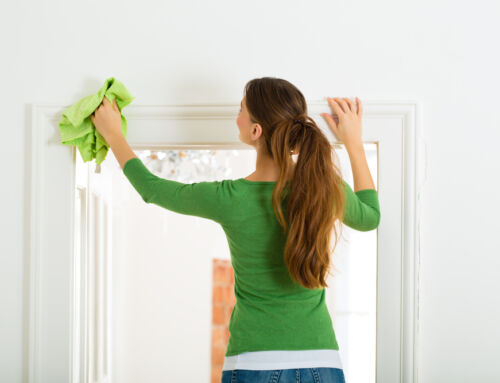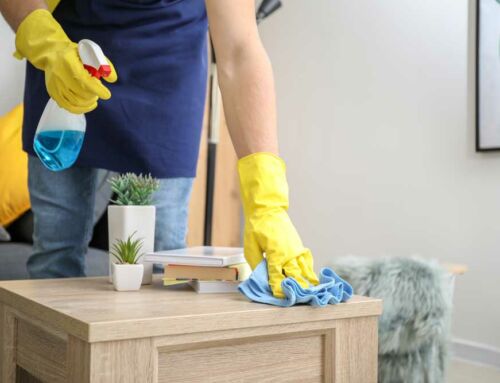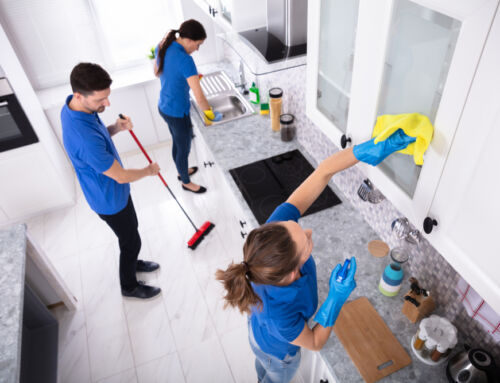Are you tired of dealing with allergies in your home? Do you want to create a healthier living environment that reduces allergens and promotes overall well-being? If so, this comprehensive guide on deep cleaning techniques is here to help. By following the strategies outlined in this article, you’ll be able to effectively clean your home, minimize allergens, and enjoy allergy relief.
Understanding Allergens in the Home
Allergens are substances that can trigger allergic reactions in sensitive individuals. Common allergens found in homes include dust mites, pet dander, pollen, mold, and more. These allergens can lead to a range of symptoms, such as sneezing, coughing, itchy eyes, and respiratory issues. Deep cleaning your home is essential to reduce the presence of these allergens and create a healthier living environment.
Preparing for Deep Cleaning
Before diving into deep cleaning, it’s important to gather the necessary cleaning supplies and equipment. Make sure you have a vacuum cleaner with a HEPA filter, microfiber cloths, cleaning solutions suitable for your surfaces, gloves, and masks. Additionally, creating a cleaning plan and schedule will help you stay organized and ensure you cover all areas of your home.
Cleaning the Bedroom
Start your deep cleaning journey in the bedroom, as this is where you spend a significant amount of time. Begin by dusting and vacuuming all surfaces, including mattresses and pillows. Laundering bedding and curtains regularly is also crucial in reducing allergens. If you have pets, take extra care to manage pet-related allergens in the bedroom by washing their bedding frequently and keeping them out of the bedroom.
Cleaning the Living Areas
The living areas of your home, such as the living room and dining room, require regular deep cleaning to minimize allergens. Vacuum and clean upholstered furniture to remove dust, pet dander, and other allergens. Dust and wipe down surfaces, including shelves, tables, and electronics. Don’t forget to remove and clean air vents and filters, as they can accumulate dust and contribute to poor air quality.
Cleaning the Kitchen
The kitchen is another area where allergens can accumulate easily. Deep cleaning your kitchen appliances, such as the refrigerator and oven, helps remove food residues and potential allergens. Clean countertops, cabinets, and pantry regularly to eliminate dust and prevent cross-contamination. For individuals with food allergies, it’s crucial to be vigilant about managing food allergens and avoiding cross-contact.
Cleaning the Bathroom
The bathroom is prone to moisture, which can lead to mold and mildew growth. Clean and disinfect all fixtures, including the sink, toilet, and shower. Use effective cleaning solutions to address mold and mildew, and ensure proper ventilation to minimize moisture buildup. Regular maintenance and cleaning in the bathroom are essential for reducing allergens and maintaining a hygienic space.
Cleaning the Floors
Different types of flooring require specific cleaning methods. For carpets, vacuuming regularly is crucial to remove dust, pet dander, and other allergens. Consider steam cleaning carpets to deep clean and eliminate embedded allergens. Hardwood and tile floors should be mopped with appropriate cleaning solutions. Using eco-friendly and allergy-friendly cleaning products ensures a healthier environment for allergy sufferers.
Addressing Hidden Allergens
Apart from visible surfaces, hidden allergens can also contribute to allergic reactions. Clean and maintain your air conditioning and heating systems to prevent the circulation of allergens. Control dust and allergens in storage areas by organizing and regularly cleaning them. It’s also important to check for hidden mold and moisture issues, as they can significantly impact indoor air quality.
Tips for Allergy-Friendly Cleaning
To make your cleaning routine more allergy-friendly, consider using natural and non-toxic cleaning products. These alternatives are often less irritating to sensitive individuals. It’s also recommended to wear protective gear, such as gloves and masks, during cleaning to minimize exposure to allergens. Creating a regular cleaning routine ensures that allergen buildup is consistently addressed.
Managing Allergens Beyond Cleaning
While deep cleaning is vital, managing allergens goes beyond regular cleaning tasks. Consider utilizing air purifiers and dehumidifiers to improve indoor air quality. Proper ventilation is also crucial in preventing the accumulation of allergens. If you have pets, implement allergen-reducing strategies such as regular grooming and designated pet-free areas in your home.
Creating a Healthier Living Environment
By following the deep cleaning strategies outlined in this article, you can significantly reduce allergens in your home and create a healthier living environment. Maintaining a clean and allergen-free home has numerous benefits, including improved respiratory health and overall well-being.
Conclusion
In conclusion, deep cleaning your home is essential for allergy sufferers seeking relief. By understanding common allergens, preparing for deep cleaning, and following the strategies provided for each area of your home, you can effectively reduce allergens and create a healthier living environment. Remember to implement allergy-friendly cleaning practices, manage hidden allergens, and explore additional measures like air purifiers to enhance the effectiveness of your deep cleaning routine.





